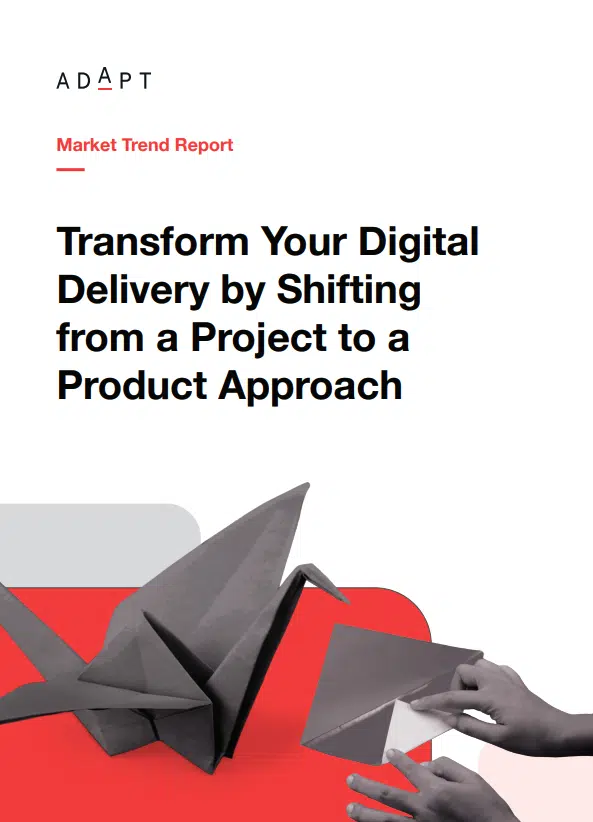
Executive summary
Shifting from a project to a product discipline is a transformative approach that enhances digital delivery by fostering continuous improvement and a laser focus on customer needs. Unlike a project approach, which focuses on completing tasks within a fixed timeline and budget, a product approach prioritises long-term value creation and customer satisfaction.
This disciplined shift encourages organisations to develop and iterate digital products based on ongoing feedback from external customers and internal staff. This leads to greater agility and alignment with business objectives.
By forming dedicated cross-functional teams that work on a product throughout its lifecycle, companies can ensure cohesive and efficient development, adapting quickly to market changes and evolving customer needs.
The benefits of adopting a product disciplined approach are:
- a more flexible and responsive approach to digital delivery, enabling rapid iteration and reducing time-to-market for new features or updates
- continuous engagement with customers ensuring products evolve in line with user expectations, fostering loyalty and satisfaction
- promoting sustainable growth by encouraging long-term thinking and a culture of innovation, as teams constantly seek ways to enhance the product and improve the user experience.
Implementing this shift requires strong leadership and cultural change. Leadership must champion the transition, promoting a culture that values continuous improvement. By integrating regular customer feedback into the development process and fostering collaboration across dedicated product teams, organisations can achieve significant improvements in efficiency, resource use and digital delivery capabilities. This strategic shift positions companies to better meet market demands and achieve their business objectives, ensuring sustained success in a competitive digital landscape.
In this report, ADAPT examines how Australian organisations are implementing this approach. ADAPT interviewed C-level technology and digital executives from various industries—including telecommunications, financial services, education, and government—to understand the state of digital product management in Australia and abroad.
We focused on the catalysts that prompted these industry leaders to transition from ‘project’ to ‘product’ models in delivering their core applications, the tactics they use to be more agile in their approaches to innovation, and the results they have achieved so far.
Organisations that manage IT delivery as projects instead of products are using managerial principles from two ages ago and cannot expect those approaches to be adequate for succeeding in this one. Visionary organisations are creating and managing their value stream networks and product portfolios in order to leapfrog their competition in the Age of Software.”
― Mik Kersten, Project to Product: How to Survive and Thrive in the Age of Digital Disruption with the Flow Framework



